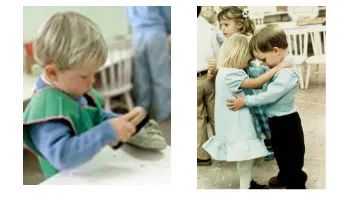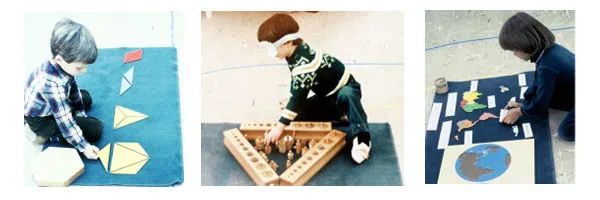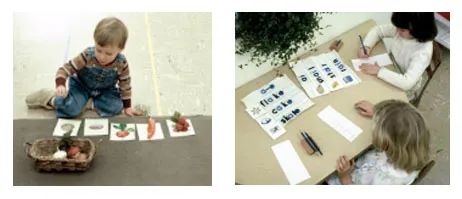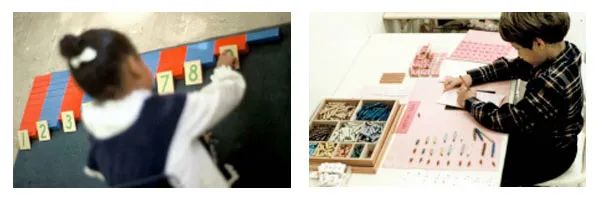Four Avenues of Montessori ~ Introduction
Early Childhood Education
Maria Montessori gave us a message, a way of life, as well as a method. It is the way of respect and dignity for the great developmental tasks of childhood. It is the process of making sure the child has available in his environment what he needs to fully grow and develop.
In the Montessori early childhood environment for ages 2½ - 6, there is a basic structure of four major avenues of learning. Those four avenues are:
1. Practical Life. This avenue presents activities designed to help the child coordinate his movements, learn to concentrate, develop an internal sense of order, and become independent in his actions. So we offer lessons in how to be polite, how to tie shoes, how to do buttons, how to wash hands, how to dust and how to wash dishes, to name just a few.
Practical life also includes arts and crafts, as well as activities such as dancing and marching with music.

2. Sensorial Development. In this avenue, the child learns to develop and refine the senses and develop clear concepts. Material and activities are offered for the visual sense, including size, length, width, color, shape, and form. The auditory sense includes differentiating between loud and soft, and learning the notes of the diatonic scale. There are also lessons for the sense of touch, temperature (thermic sense), weight (baric sense), and taste (gustatory sense.)
Sensorial material is also the open door to geometry, geography, botany and music.

3. Development of Language. This avenue covers a broad scope of activity and development. It moves from basic oral language to vocabulary to phonemic awareness and learning the letters. From there, the child learns to build and read words, phrases, sentences, and books. He learns spelling, basic grammar, and proper usage.

4. Early Preparation of the Mathematical Mind. In this avenue, the child learns all about counting and our fundamental base ten system of the decimal system. The child proceeds to linear counting and the basic arithmetical operations of addition, subtraction, multiplication, and division.

Our next four blog posts will share a review of what each of the avenues offers. We include several wonderful excerpts from Elisabeth Caspari’s notes from her training course with Maria Montessori. We think you will enjoy reading these unpublished jewels of Montessori’s thought in the subjects of langauge and math.




















